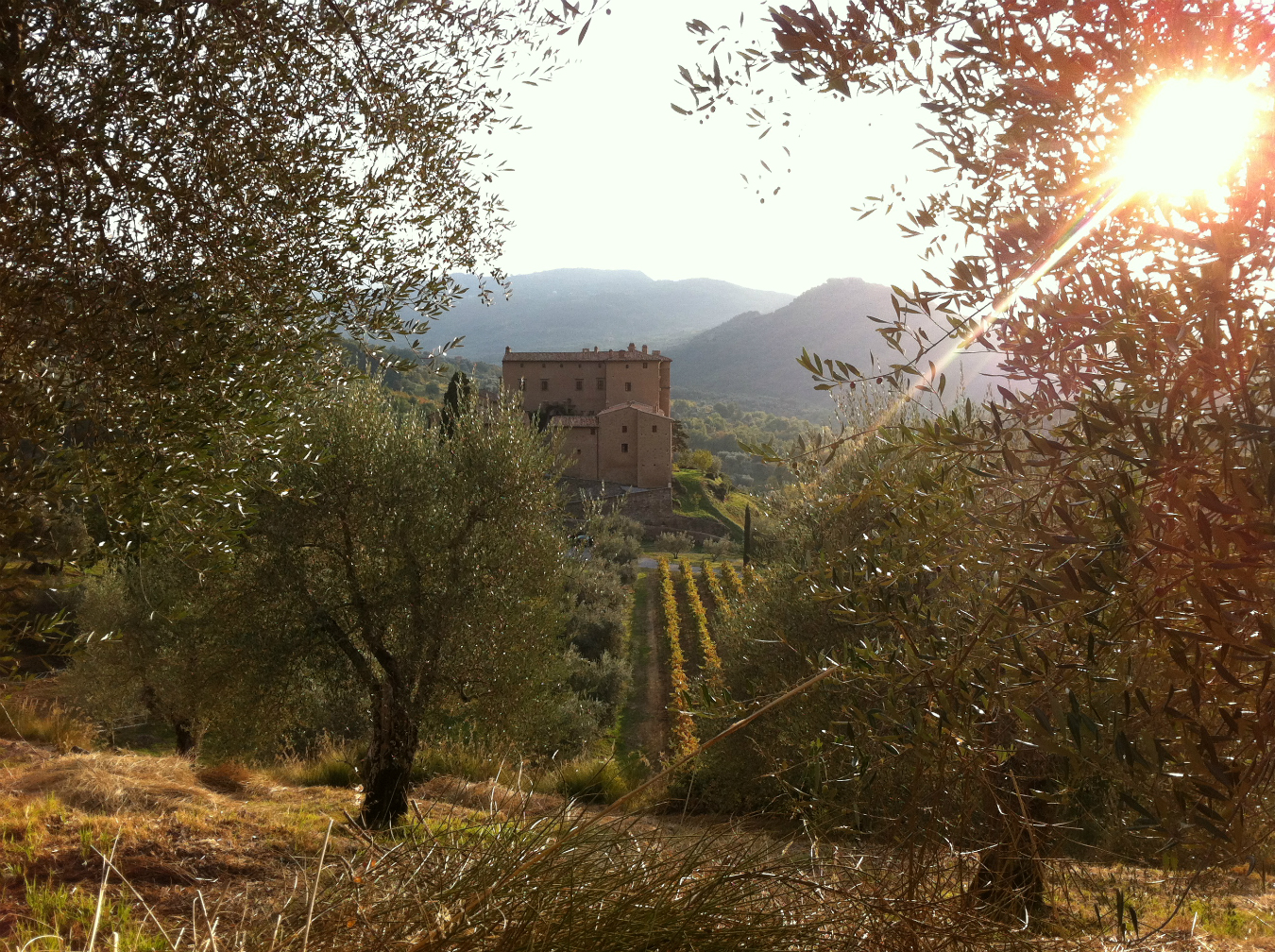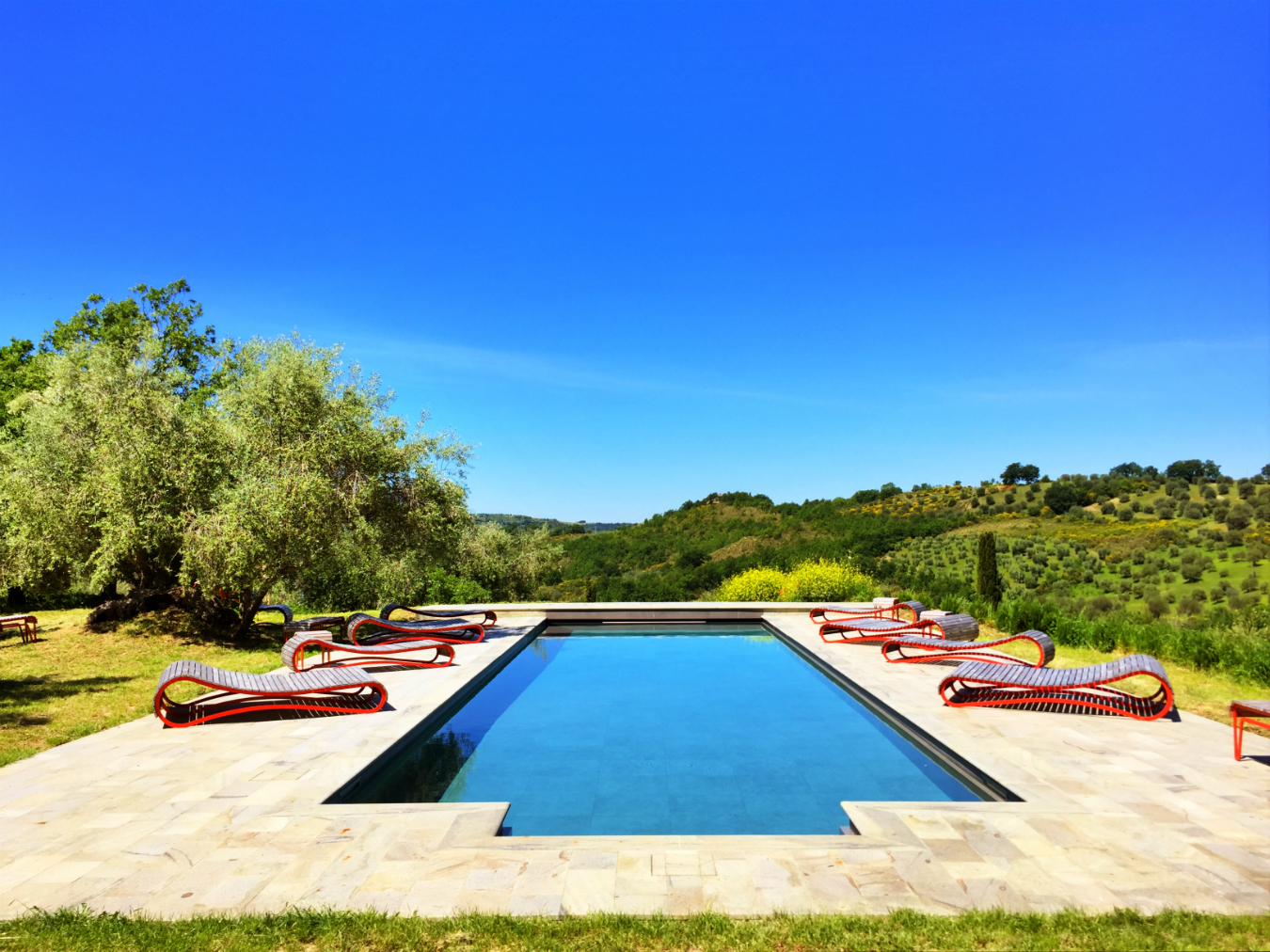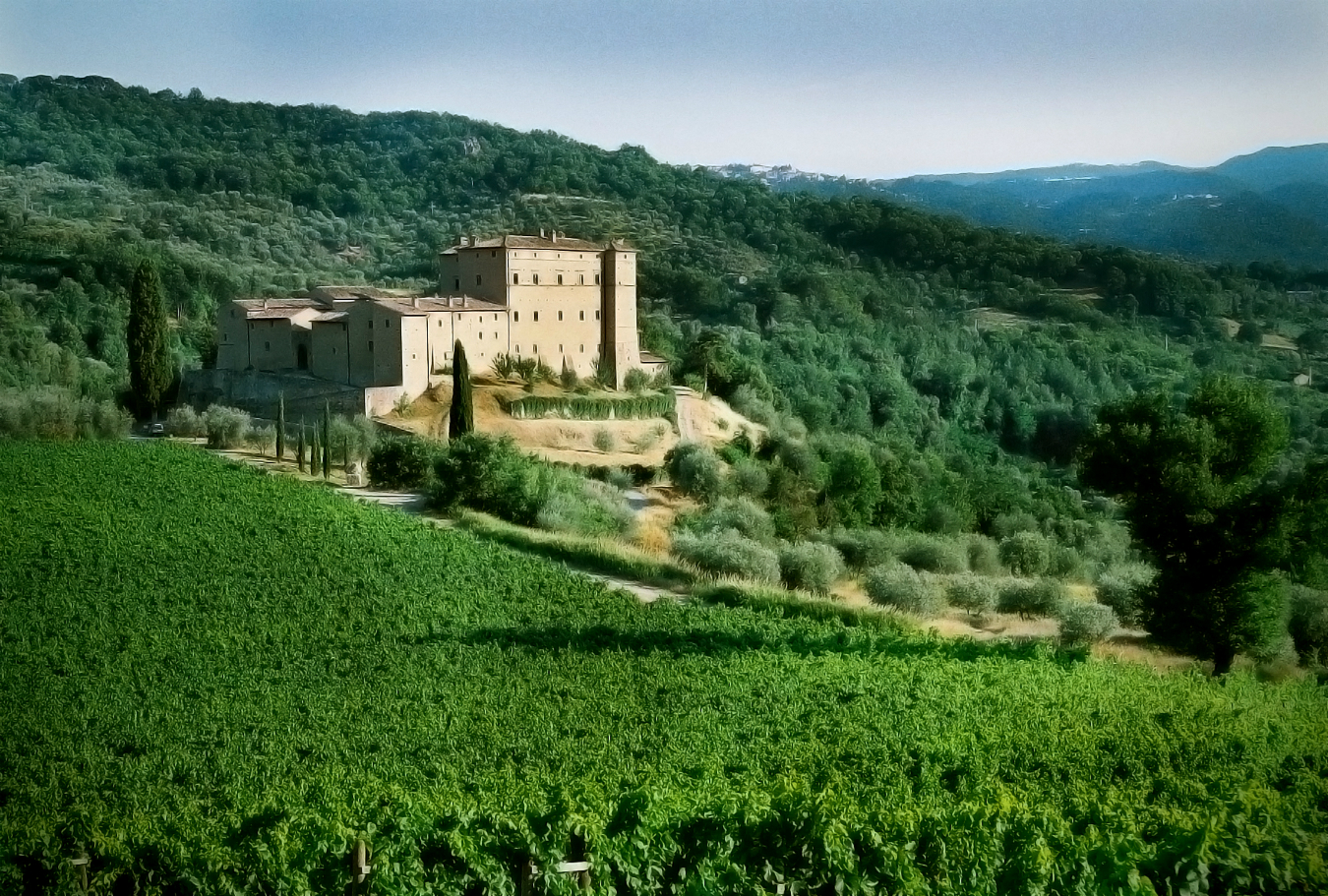The arrival at Castello di Potentino is announced by the welcoming barks of the estate’s great dane, Minerva—Mini, for those who know this gentle giant well. A slow ascent up the castle’s sloped walk takes one through two sets of gates and into the primary courtyard. A loggia borders one side, in which kittens lazily loaf in the many wicker armchairs. Entering through the main door, guests are greeted by a life-sized cutout of Graham Greene (one of the estate’s owners) made by Quentin Blake, longtime illustrator for Roald Dahl. Rumoured to have been visited by Saint Catherine of Siena and painter Caravaggio, this traditional, medieval castle in Tuscany boasts a distinctly British flair.
Run by Charlotte Horton and her half-brother Alexander Greene (son to Graham), Potentino is not only a working estate and vineyard, but also a centre for cultural events—whether planned, as with the summer concert series, or spontaneous, depending on who might be staying the night. A year-round bed and breakfast, the Castello hosts weddings along with yoga retreats, wine tastings, and gourmandise weekends, such as a recent collaboration with Rococo Chocolates of London.
The family cut their teeth on Italian estates with the Castello di Montepò, located closer to the coast near Grosseto, which Horton ran as a winery for seven years. After selling in 1999, the family sought a property with less land, and discovering the dilapidated Castello di Potentino, purchased it in 2000 from a collective of 24 individual owners, and started the long task of restoring it. Among their many improvements is a cantilevered wooden staircase in the magnificent double-height library, the stabilization of the late 19th-century interior decorative wall frescos and chapel (handy for those weddings), and the recent installation of a swimming pool that overlooks the valley and vineyards.
The cypress loungers that surround the pool are the result of a recent design collaboration between the Castello and Jono Nussbaum, an English furniture maker. Among others, they have also collaborated with Nigel Coates, who has worked with Fornasetti and Alessi, and who designed the Castello’s dining chairs and chandeliers. The products of these collaborations, under the “Paracastello” line, are for sale, and were featured in the Fuorisalone of Milan Design Week in 2015. The ceramic tableware and pillowcases might be more manageable for those without their own castles.
The tradition of winemaking here dates back to the Etruscan period, evidenced by the ancient wine stones in the valley. The microclimate of the area, and specifically that for the four hectares of vineyards, combines the hot dry air of the Tuscan coast with the cold air coming down from Mt Amiata, which overshadows the Castello. The rich volcanic soil, never washed away at Potentino, creates a terroir that is rich in minerals. Horton, who is the winemaker, grows grenache, sangiovese, and, very unusually, pinot noir grapes, the last of which are transformed into Burgundy wines that are impossible to differentiate when compared with those from France. Many of the wines are named after the precious stones historically identified with the classical world, echoing Horton’s feelings that “winemaking is an expression par excellence of one’s relationship with one’s environment.” There can be little doubt over the quality of Horton’s relationship with her setting: for the last three years, her Sacromonte, a textbook sangiovese, has won the Vino d’ecellenza from the Guida de l’Espresso, identifying it as one of the 500 best wines from Italy.
Throughout the Castello, one sees the motif of the pomegranate: fitting for a place so punctuated by cyclical rhythms and seasons. The days are marked by communal meals, when family, visitors, and workers take lunch and dinner together at the vast tables in the loggia or dining room. These meals are carefully overseen by Horton, who sets the menus, and are always accompanied by wine, olive oil, and grappa—all made at the Castello and from the vineyards and groves on the estate.
In the winter, the pace at the Castello slows and the fog hangs over the surrounding foothills, creating the ideal environment in which to curl up with a good book. And there is no shortage of good books: Alexander’s grandmother Helga Guinness was engaged to literary icon Raymond Chandler when he died, and the Greene family remains in charge of Chandler’s literary estate. These extraordinary ties to English literature imbue the Castello with still more magic, aligning with Horton’s observation that “vineyards only grow where one can live well.”
Visit our Travel section.












